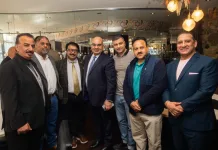
In a previous article, we looked at the case of Specsavers –v- Asda which concerned a marketing campaign by Asda to promote its in-store optician services. Asda used various marketing materials in their stores and on their website which included the taglines “Be a real spec saver at Asda” and “Spec saving at Asda”. Asda had also used a logo mark of two non-intersecting ovals similar to the overlapping ellipses used by Specsavers (“the wordless mark”).
Specsavers issued proceedings in the High Court for trade mark infringement and passing off. The Court of Appeal found that the use of both straplines amounted to an infringement and was unfair.
The Court of Appeal sought guidance from the Court of Justice of the European Union which found that the use of a composite mark (a word mark superimposed over a logo mark) is capable of amounting to genuine use of a trade mark, provided that the use of the composite mark does not alter the distinctive character of the logo as registered. The case was then returned to the Court of Appeal for an application of the guidance provided by the European Court to the specific facts in question.
Whilst the infringement proceedings were concluded on terms confidential to the parties, the Court allowed Specsavers’ appeal relating to its trade mark. Accordingly, the wordless mark was not to be revoked for non-use.
The Judge indicated initially that Specsavers’ argument did not appear very convincing on the basis that the addition of the word ‘Specsavers’ was a highly distinctive and prominent delineating element when compared to the wordless mark. However, the Judge was persuaded by the following factors:-
• Specsavers had made very extensive use of the logo for a long period of time. In 2009 alone they had spent £45million on advertising
• None of their competitors have a logo even vaguely similar
• There was evidence that ASDA had deliberately adopted a logo similar to that of Specsavers. Therefore, it was reasonable to assume that ASDA were well aware that consumers would identify the overlapping ovals as denoting Specsavers, even without the addition of the word.
The wordless mark had itself been seen as a trade mark and not just as background. This all amounted to unusually convincing evidence of genuine use.
The Court dismissed the concern expressed by the Trade Marks Registrar (who had been permitted to intervene in the appeal) that allowing the appeal would result in many applications to register relatively commonplace outline shapes of logo marks. The Court were of the view that each case would be decided on its own facts but did note that this was an unusual case and it was generally unlikely that the background of a mark would be perceived as an indication of origin.
We at Blacks have a specialist Intellectual Property team dealing with all aspects of trademarks and any disputes arising.
Please contact Luke Patel on 01132279316
or by email at LPatel@LawBlacks.com













